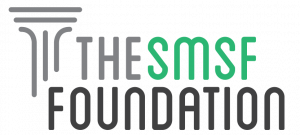What is Rent Relief?
Rent relief is a temporary measure introduced by the Australian government to assist tenants meet their rental payment obligations if they have suffered financially due to COVID-19 pandemic. The Relief measure covers 2020 and 2021 financial years. The rent relief has been extended to tenants (both related and unrelated parties) of properties held in Self Managed Superannuation Funds (SMSFs) directly or in an entity owned by the fund (i.e. a related trust, Related company, etc.). The rent relief is available by way of:
- Rent deferral: where rent is deferred for a temporary period (i.e. 6 to 9 months). The full rent in this situation would be fully payable at the end of the deferral period.
- Rent Reduction: where rent is reduced for a temporary period in line with the reduction in the tenant’s reduction in turnover. The reduced amount of rent will be payable during the temporary period, and the reduction allowed by the SMSF will be foregone (e.g. if the tenants’ income reduced by 30%, the rent is then reduced by 30%, only 70% of the rent will be payable and the balance of 30% will be forgone by the SMSF).
- Rent Waiving: where the SMSF will offer a temporary rent free period. The rent for this specific period will be forgone by the SMSF.
What are the Rules?
Where a SMSF extends rent relief to a tenant due to the financial impact of COVID-19, simply, the following 3 requirements must be met:
1. Rent relief is on commercial terms:
This can be tricky given COVID-19’s environment and impact are changing rapidly and there are no established parameters in the market. However, the ATO provided guidance using the National Cabinet Mandatory Code of Conduct (National Code):
- The tenant will be required to self-assess whether they were impacted by Covid-19 and a rental tenancy relief request made in writing.
- Rental relief is provided in proportion to the loss of income experienced by the tenant due to COVID-19
- The tenant must be current with their rental payments and not in arrears as of 1 January 2020
- The rental relief arrangements should be comparable with other similar lease agreements and in line with COVID-19 market conditions
Once the relief is granted by the SMSF, the tenants must ensure they comply with the relief agreement drawn with the SMSF. Just remember, each fund has different circumstances and it is vital for SMSF trustees and tenants to discuss the details with their SMSF specialist.
2. Relief is extended as a result of the financial impacts of COVID-19
While the onus is on the tenant to self assess the COVID-19 impact, they should include in their Rent relief written request the following information:
- The tenant’s business type (i.e. hairdresser)
- How COVID-19 has impacted their business (i.e. hairdresser closed)
- Percentage of the business’s turnover reduction due to COVID-19
3. Relief is adequately documented
- Made in writing and signed by the SMSF Trustees and tenants
- Include the tenant’s written request and all supporting evidence
- section 109 – Arms’ Length provisions
- section 62 – Sole Purpose Test
- section 84 – In-house Assets Rules
- section 65 – Financial Assistance to Members
What is the ATO View?
How to account for the Rent Relief in the financial statements?
- On commercial terms
- Due to the financial impacts of COVID-19
- Adequately documented
Will my Auditor Qualify the Audit?
- Rent relief signed agreement detailing the terms and period of the relief provided
- Tenants’ signed rental relief request with supporting documents (i.e. Jobkeeper application, evidence of income reduction, etc.)
